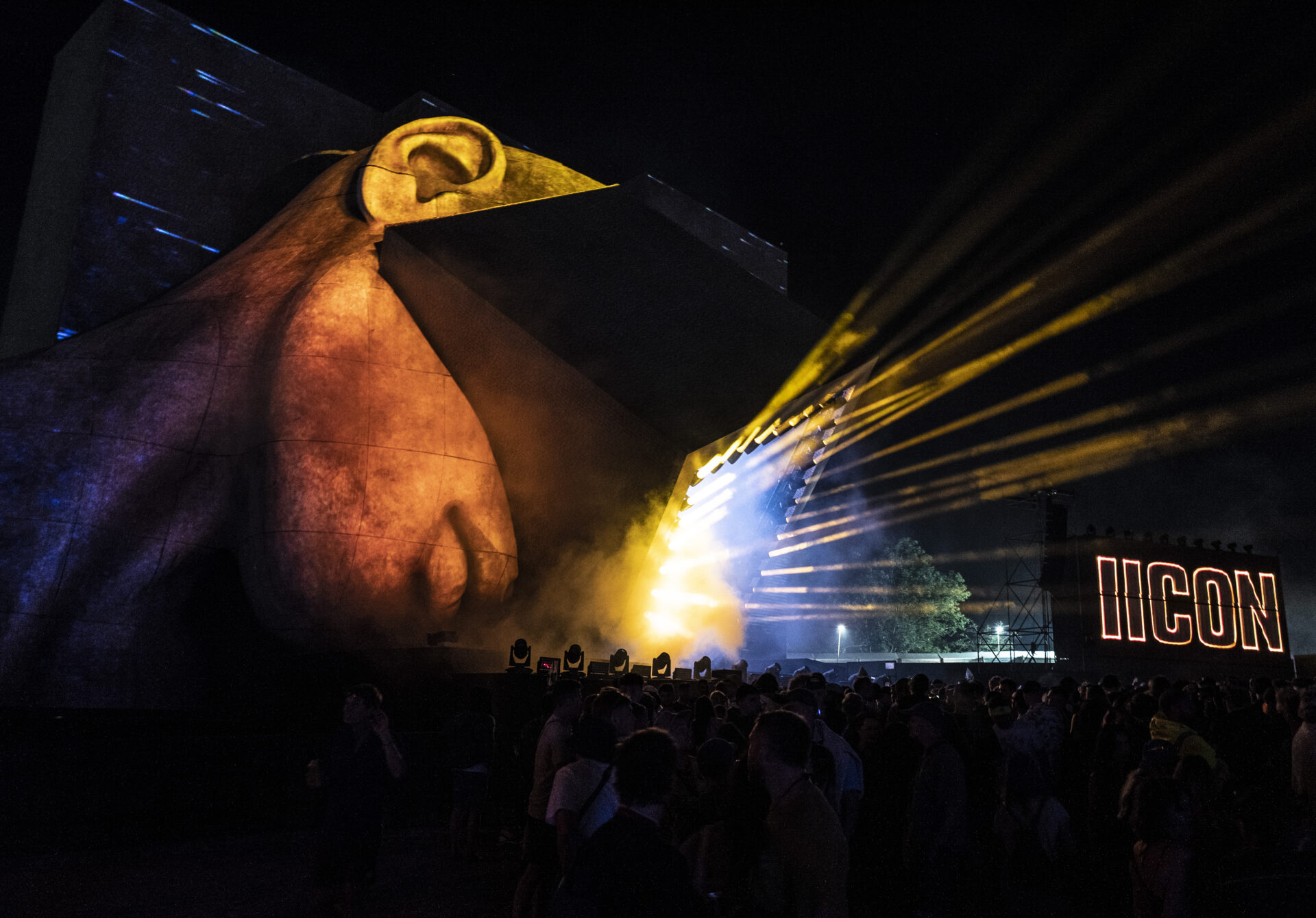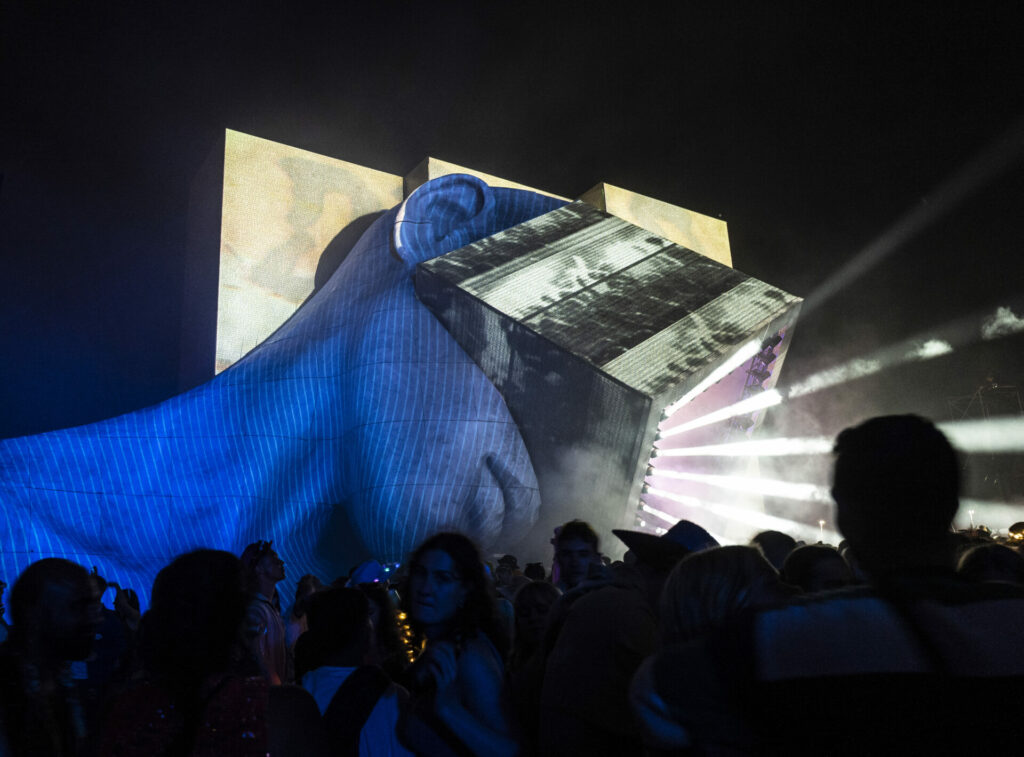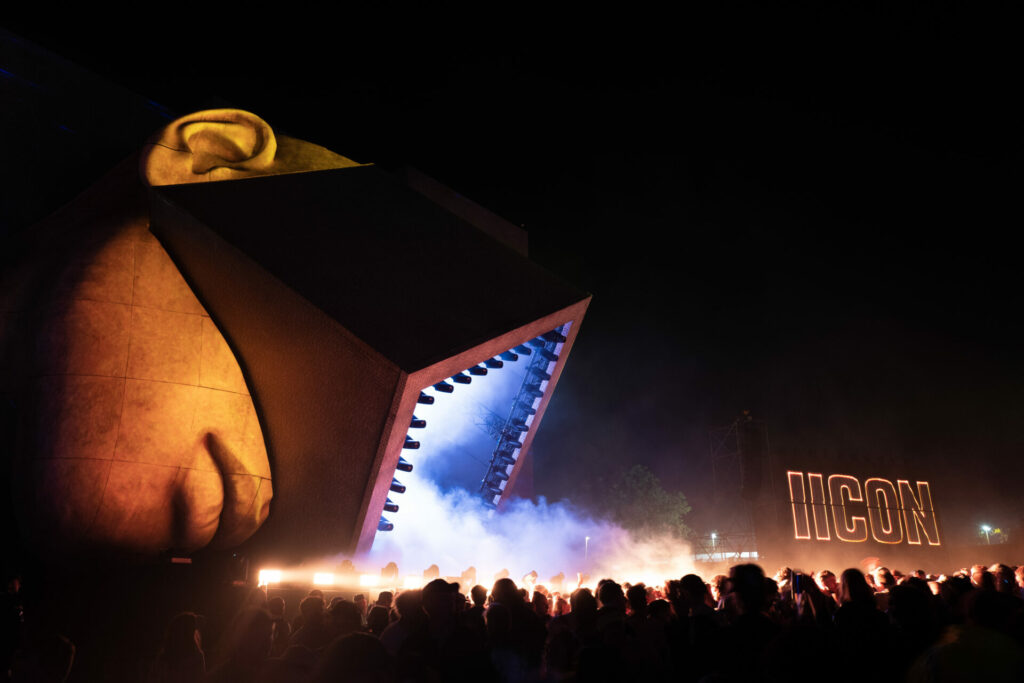The year IICON came into its own at Glastonbury
The story behind the world famous festival’s infamous late night club destination at Block9

There’s an art to surviving Glastonbury. The choice is clear: run around looking for friends, or just get on with catching artists and encountering strangers that happen to be a tonic to the soul.
I managed to achieve a balance of both. Independence is key though, especially if you want to leave with little sense of FOMO-which for most of us, is not so easily done. But I wasn’t going to risk missing the spectacle of the IICON stage. It’s an epic site to behold. The vast space with its colossal structure of a human head hypnotised by a VR headset appears to portray the anaesthetised state of our collective psyche.
Sobering imagery sprawled across the screen, depicting the state of the world. It comprised an arthouse display of figurines; they whirled like dervishes in the dark with dramatic emotion to experimental sounds as the words ‘the prince of peace is the prince of war’ bellowed through the air.
Lasers, lights and three dimensional video mapping formed part of a 13.5 minute AV3D film inspired by eight movements of composer Olivier Messiaen’s Quatour pour la fin du temps (Quartet for the End of Time).
Played once a day–it was the prefix for the collective psyche before each evening’s headlining set. Block9 creative directors Gideon Berger and Stephen Gallagher are at the helm of the project. “Messiaen was under occupation when he debuted this piece with old instruments as a 1940s prisoner of war–and I feel we’re also living under a sense of occupation, except we are our own captors,” Gallagher explained.

Club culture is conscious not silently complicit. And IICON has made this statement loud and clear since its 2019 inception. Its concept is multifaceted: a wake up call from the stupor of capitalism. Berger tells us it’s also inspired by “radical acceptance” of what’s happening to us and to our world. “That way we can own it and do something about it. Everyone coming here engages with the concept in hedonistic states; so we can hopefully move towards achieving this,” he says.
With this in mind, IICON continues to make a mark on the Glastonbury club circuit this year. It’s also a continuation of the legacy spawned in 1995 at the event’s very first dance tent–started by Malcolm Hayes in the area that grew to become the Silver Hayes.
Robin Wealleans, 45, did the visuals here to Daft Punk and others in 1997 and has been to Glastonbury 33 times – working with various artists ever since. He tells me the phenomena of dance music at Glastonbury made huge waves when Orbital was televised in 1994. “Glastonbury was a gateway to dance music for so many people. I remember watching Leftfield at the NME stage with my much missed mum Annie and being blown away–but I wonder what would have happened to dance culture had the dance tent and such game-changing sets not happened?”
The IICON stage, Robin says, is a visualisation of that journey “It sounds incredible from almost anywhere. It’s got that club feel, even in a massive field. And with everyone talking to each other and giving each other hugs, it’s got that epic 90s vibe.”
But even before the dance tent became a reality, rave culture was making its mark within the festival’s markets area – and of course in the Travellers Field. IICON’s dedication to the past, present and future of club culture is pronounced and takes in all these influences. Berger says its central theme opened the stage to producers, DJs and live acts who engage with its concept through the “aesthetic of their dark, industrial, experimental, leftfield sounds.”
Amongst them are LTJ Bukem, Jamz Supernova, UR’s Mark Flash Yung Singh, Black Obsidian Sound System, Cakes Da Killa, Tash LC, Zenker Brothers, Deena Abdelwahed, Midland, Four Tet and Freakinstein: a testament to the fact that in 2023, IICON has made an even more prominent mark than usual on the Glastonbury club circuit.

But what would this even look like without the influence of sound system culture? The permanent residence of the Notting Hill Carnival Sound System in Block9 is dedicated to this recognition. As seen by the curation of the entire area, Berger is especially passionate about making this connection. The Jah Shaka tribute–delivered by the dub legend’s lifelong friend Dennis Bovell, was of course, a no brainer.
“Shaka was massively important to the development of loads of new stuff that came out of this country,” Berger tells us. “Drum n bass, dubstep, grime. Anyone that’s ever made a significant piece of music in any of those genres has had a Shaka experience. A lot of people don’t even know how much they were influenced by him and his sound, his engineering of sound systems, of using mics, FX, rewind and single decks. If I believed in OBEs I’d say he deserved one.”
